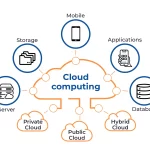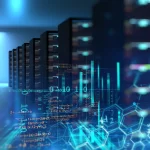What is Information Management Technology Explained
In today’s data-driven world, effective management and utilization of information have become paramount for businesses and organizations across industries. Information Management Technology (IMT) is a discipline that enables the efficient collection, storage, organization, retrieval, and analysis of data and information. In this blog post, we will delve into the concept of Information Management Technology, its key components, and its significance in modern-day operations.
Understanding Information Management Technology:
Information Management Technology refers to the processes, systems, and strategies employed to handle information within an organization. It involves the acquisition, storage, organization, retrieval, sharing, and protection of data and knowledge assets to support decision-making, improve operational efficiency, and enhance overall performance.
Key Components of Information Management Technology:
- Data Collection and Capture: IMT encompasses methods and tools for collecting data from various sources, both internal and external. This may include structured data from databases, unstructured data from documents, and semi-structured data from emails, social media, or web interactions.
- Data Storage and Infrastructure: Effective information management requires secure and scalable storage infrastructure. This involves choosing appropriate database systems, data warehouses, and cloud storage solutions to accommodate the organization’s data volume and ensure data integrity and availability.
- Data Integration and Transformation: IMT focuses on integrating disparate data sources and transforming raw data into a consistent and usable format. Through techniques such as Extract, Transform, Load (ETL) processes, data cleansing, and data normalization, organizations can ensure data consistency and reliability.
- Data Governance and Quality: Information Management Technology emphasizes maintaining data quality and integrity. This includes defining data governance policies, establishing data standards, ensuring compliance with regulations, and implementing data quality checks to eliminate errors, inconsistencies, and duplication.
- Information Retrieval and Access: The ability to retrieve and access information efficiently is crucial. IMT employs techniques such as indexing, search algorithms, and knowledge management systems to facilitate quick and accurate retrieval of relevant information when needed.
- Data Analysis and Reporting: IMT enables organizations to leverage data through analytical tools and techniques. This includes data mining, business intelligence, and data visualization, allowing businesses to extract meaningful insights and generate reports for decision-making and strategic planning.
- Information Security and Privacy: Protecting sensitive information is a vital aspect of IMT. This involves implementing security measures, such as encryption, access controls, and user authentication, to safeguard data against unauthorized access, cyber threats, and data breaches.
- Collaboration and Knowledge Sharing: IMT promotes collaboration and knowledge sharing within organizations. Through the use of collaborative tools, intranets, and document management systems, employees can share information, collaborate on projects, and leverage collective knowledge for innovation and problem-solving.
Significance of Information Management Technology:
- Enhanced Decision-Making: IMT provides timely and accurate information, enabling organizations to make informed decisions based on reliable data insights and analysis.
- Improved Operational Efficiency: Efficient information management streamlines processes, reduces redundancy, and optimizes resource allocation, leading to improved productivity and operational efficiency.
- Better Customer Engagement: IMT helps organizations understand customer needs, preferences, and behaviors, enabling them to tailor products, services, and marketing efforts to enhance customer satisfaction and loyalty.
- Compliance and Risk Mitigation: Effective information management ensures regulatory compliance and mitigates risks associated with data breaches, privacy violations, and legal consequences.
- Innovation and Competitive Advantage: By harnessing data and knowledge assets, IMT enables organizations to identify market trends, uncover opportunities, and develop innovative products, giving them a competitive edge.


































